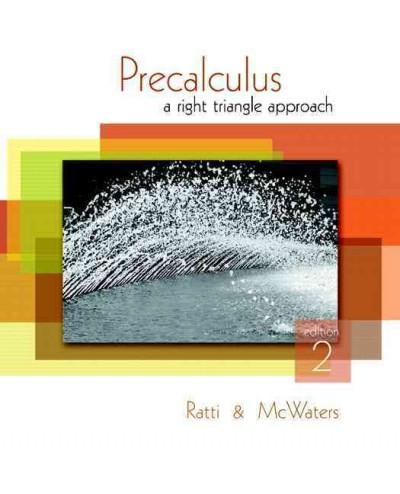Question
QUESTIONS: FIVE alternatives are provided for each of the following questions. Choose the correct alternative for each of the questions/statement. 1.1. Which one of measures
QUESTIONS: FIVE alternatives are provided for each of the following questions. Choose the correct alternative for each of the questions/statement.
1.1. Which one of measures of dispersion is not affected by outliers?
A. Coefficient of variation
B. Interquartile range
C. Standard deviation
D. Range
E. None of the above.
1.2. Which of the following could indicate that a dataset is skewed?
A. The range is equal to 5 standard deviations
B. The range is larger than the interquartile rage
C. The mean is much smaller than the median
D. There are no outliers.
E. None of the above.
1.3. What level of measurement data is associated with the least sophistication in terms of the statistical analysis that can be done with the data:
A. Nominal measurement
B. Ordinal measurement
C. Interval measurement
D. Ratio measurement
E. None of the above.
1.4. Random variables which yield numeric responses and can be meaningfully manipulated using conventional arithmetic operations is typically referred as...
A. Quantitative data
B. Qualitative data
C. Questionnaire
D. Independent variable
E. None of the above.
1.5. Read the statement below and answer the question that follows: 2 In this type of sampling design, every member of the population has similar chance of being selected as a study subject. Which one of the following methods of sampling best fits the description above?
A. Simple random sampling.
B. Stratified sampling.
C. Cluster sapling..
D. Systematic sampling.
E. None of the above.
1.6. A student initially recruited nine (9) participants for a pilot study. However, he was advised by his supervisor to add an additional participant to the pilot study. If the mean age of the nine participants is 34 years and the mean of the ten participant is 35.2, what is the age of the tenth participant?
A. 40.5 years
B. 46.0 years
C. 38.5 years
D. 64.5 years
E. None of the above.
1.7. Which one of the following sampling examples would generally lead to the least reliable statistical inferences about the population from which the sample has been selected?
A. A random sample selected without replacement.
B. A random sample selected with replacement.
C. A voluntary response sample.
D. A systematic sample.
E. None of the above.
1.8. Refer to the less-tan ogive below for the duration of international call and answer quest
ion that follows: The percentage of calls that are longer than 24 minutes is:
A. 78.125%.
B. 50%.
C. 21.875%.
D. 37.5%.
E. None of the above.
1.9. Which one of the following statements about the distinction between cluster sampling and stratified sampling is patently false?
A. In a cluster sampling a sample of mutually exclusive naturally-occurring subgroups within the population or clusters is chosen using an appropriate procedure, and a complete enumeration of only the selected clusters is carried out; in stratified sampling, the sampling is done on elements within each stratum.
B. The main objective of stratified sampling is to increase precision and representation, whereas the objective of cluster sampling is to reduce costs and improve sampling efficiency. 4
C. In stratified sampling, the sampling is done on elements within each stratum. In stratified sampling, a random sample is drawn from each of the strata, whereas in cluster sampling only the selected clusters are sampled.
D. Instratified sampling the subgroups of interest are naturally occurring, whereas in cluster sampling the researcher imposes the bifurcation of the subgroups.
E. None of the above.
Questions 1.10. - 1.12 refer to the table below that shows how life expectancy is related to levels of pollution in the environment. In a study, the life expectancy (in year) of 6 countries was obtained, along with the level of pollution. The results are shown in the table below:
Country Cost (rand' 000) Circulation
South Africa 8 65
India 40 60
Sweden 2 80
Belgium 5 75
Venezuela 22 70
China 38 64
1.10. The calculations of the person correlation coefficient for the above data are:
A. = 508; = 280; = 1416.833; r = 0.807
B. = 508; = 1416.833; = 280; r = 0.807
C. = 570; = 1416.833; = 280; r = 0.905
D. = 570; = 280; = 1416.833; r = 0.897
E. None of the above.
1.11. Based on the correlation coefficient obtained, which one of the following statements correctly describes the relationship between the 'life expectancy' and levels of pollution in the environment'?
A The 'life expectancy' and levels of pollution in the environment' are very strongly, positively correlated.
B The 'life expectancy' and levels of pollution in the environment' are very strongly, inversely correlated.
C The 'life expectancy' and levels of pollution in the environment' are weakly, positively correlated. 5
D The 'life expectancy' and levels of pollution in the environment' are moderately, negatively correlated.
E. None of the above.
1.12. The linear regression equation is:
A. y = 75.872 - 0.3585X
B. y = 75.872 + 0.3585X
C. Y= 144.3524 - 1.814 X
D. Y= 144.3524 + 1.814 X
E. None of the above.
SECTION B QUESTION TWO [22]
A hardware shop recorded its daily turnover for 100 trading days as shown in the table below
Daily Turnover Number of days
[250, 500) 5
[500 , 750) 8
[750 ,1000) 11
[1000 ,1250) 30
[1250, 1500) 32
[1500, 1750) 14
TOTAL 100
2.2. Determine the maximum daily turnover associated with the lowest 25%. (4)
2. 3. what daily turnover separates the highest 25% of turnover days from the rest? (4)
Step by Step Solution
There are 3 Steps involved in it
Step: 1

Get Instant Access to Expert-Tailored Solutions
See step-by-step solutions with expert insights and AI powered tools for academic success
Step: 2

Step: 3

Ace Your Homework with AI
Get the answers you need in no time with our AI-driven, step-by-step assistance
Get Started


